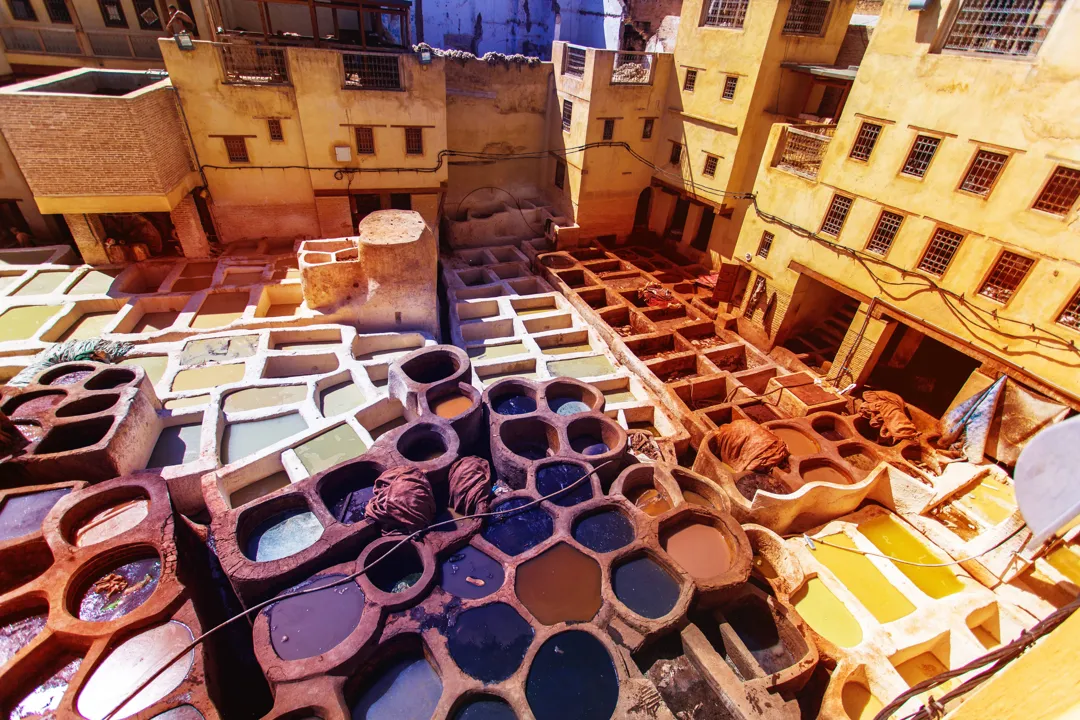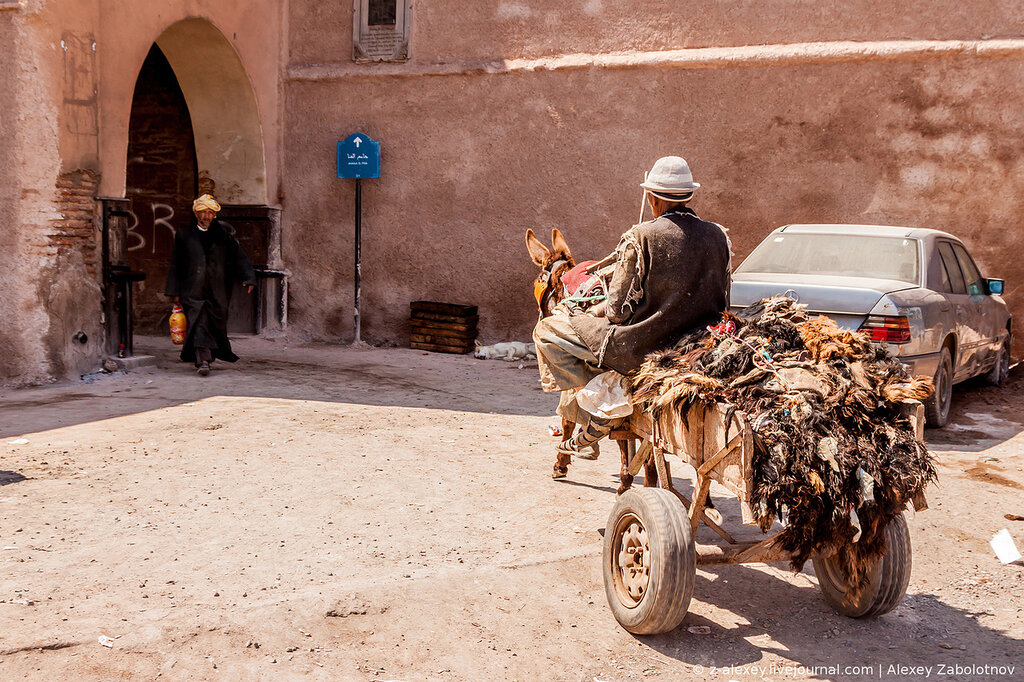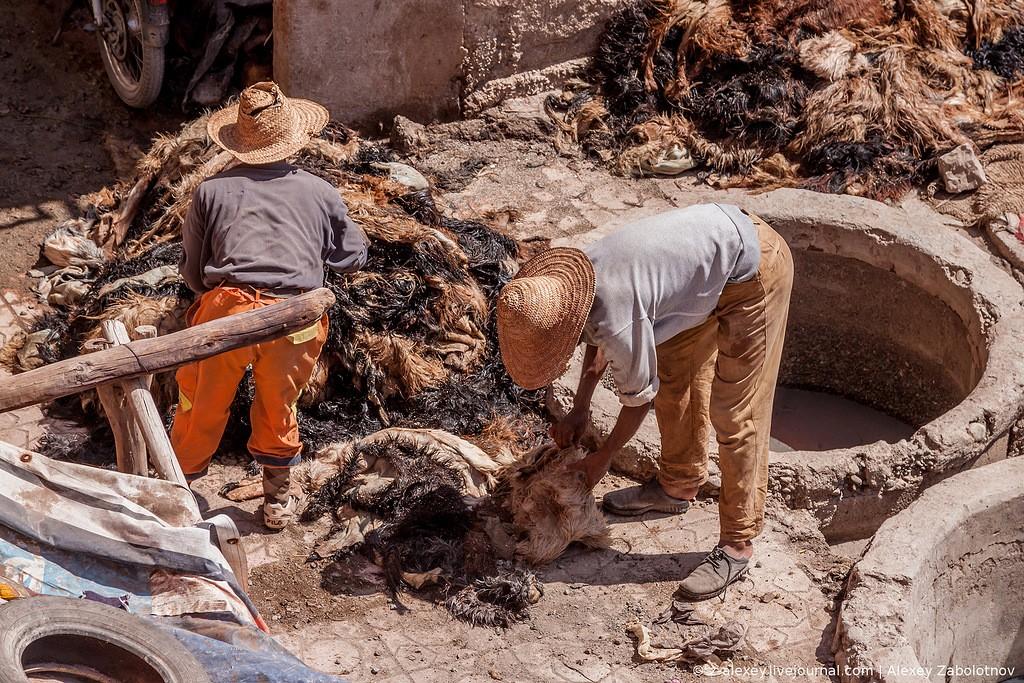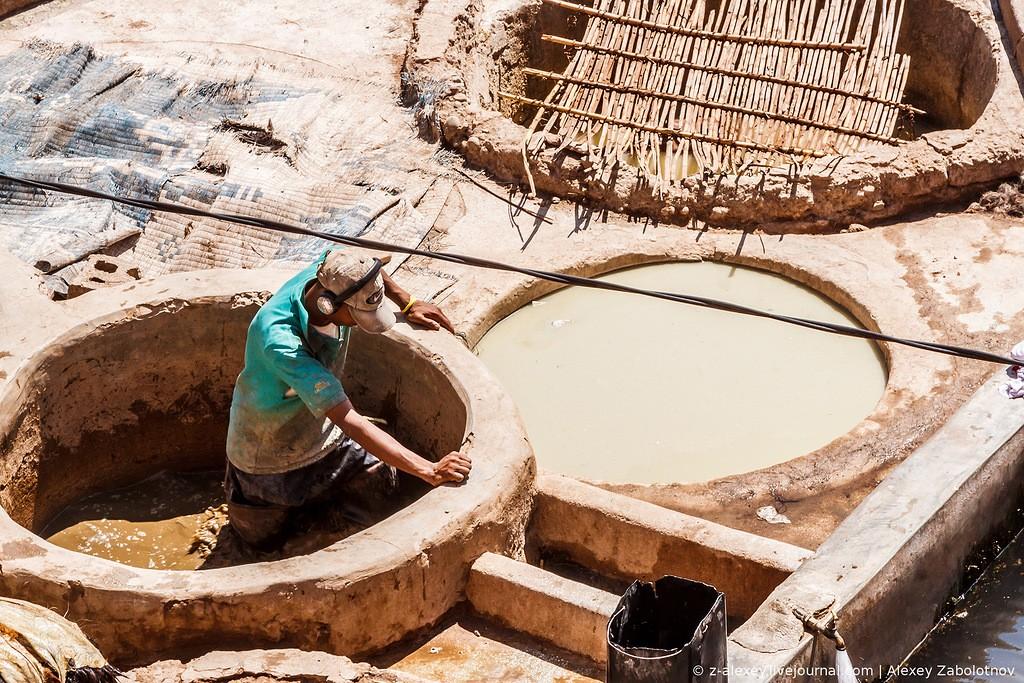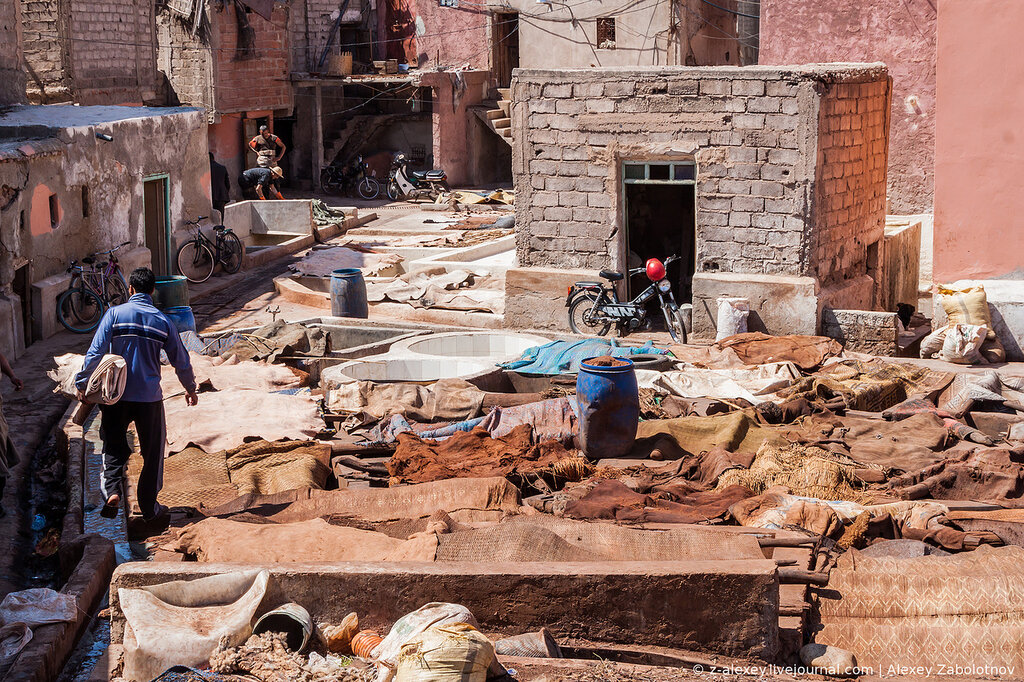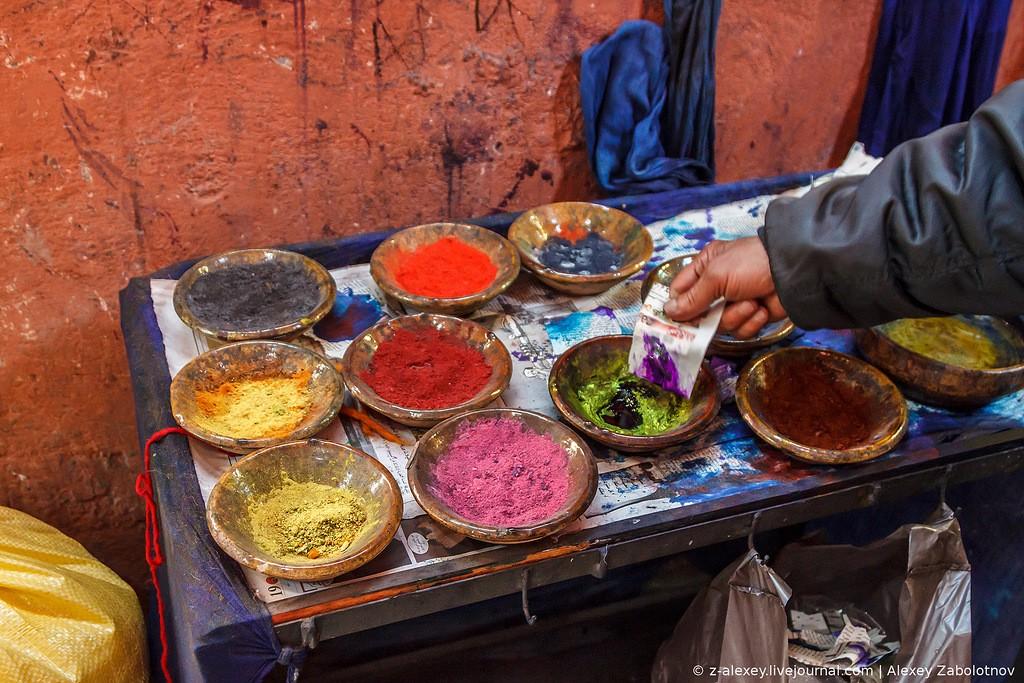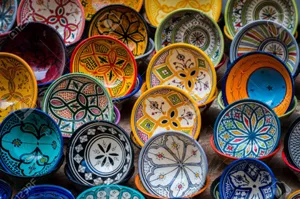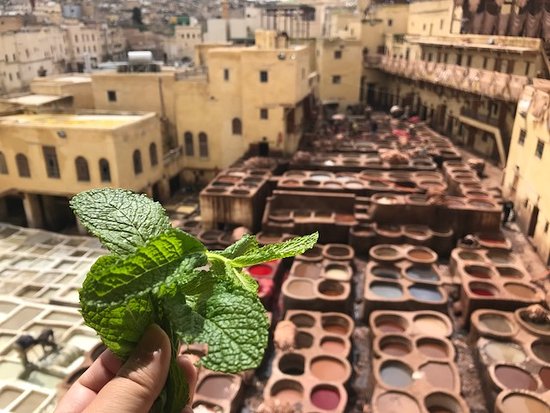In Marrakech, the traditional tanneries are a famous tourist attraction despite the unpleasant smell.
Content
Steps To Make Leather
Tips And Things To Know Before You Visit The Tanneries
How to get to the tanneries of Marrakech?
Steps To Make Leather
Centuries ago till today, the tannery in Marrakech conserved the traditional and manual method.
Workers, under the sun, dip the leather in water mixed with lemon, bird, and dog droppings.
Artisans use only natural colorants to convert the leather into a joyful creation.
Despite the unpleasant smell, the tannery of Marrakech is a main attraction that tourists enjoy discovering.
The Cleaning Step
![donkey carts transporting skins of goats]()
Donkey carts transporting skins of goats
The sheepskin arrives at the tannery in donkey carts. The treatment begins by sorting the skins and then placing them in a large vessel made of clay.
![The sorting stage]()
The received skin goes through the sorting step
Workers soaked the skin in a solution of lime and water until the leather became soft. Then, they add the waste of dogs, chickens, and pigeons to the solution. This mixture gives the place an unpleasant smell that only the workers are used to.
![Worker soaked the skin]()
Worker soaked the skins
Artisans dipped the skin in the solution for several weeks and soaked it several times.
Now it is time for the cleaning process. The workers took the skins out of the large vessels and cleaned them manually from the leech wool.
![Apprentice clean the skin of wool residues]()
Apprentice clean the skin of wool residues
After that, the artisans washed the skin in clean water and left it in the sun to dry.
![Skin dries in the sun]()
Skin drying in the sun
The next step is to color the skin.
The Coloring Step
The artisans prepared the colorants from natural substances such as saffron and pepper. Then they mixed these colorants with water in a large container and added the skins to the mixture.
![Preparing the colors]()
Preparing the colors
Constantly, the artisans moved the skin in all directions. For several weeks, they repeated this process till the tint penetrated, in deep, all the skin.
At this stage, the produced leather can go to the workshops. Here, skilled handicrafts men transform leather into beautiful and elegant items.
Despite the unpleasant smell, many foreign tourists flock to the tannery. They use green mint (as a gas mask :-)) to diminish the stench of the place.
Related posts
Tips And Things To Know Before You Visit The Tanneries
Go Early To Witness The Process Firsthand
If you want to witness the production process, it is best to go early in the morning. Many surrounding shops have a view of the tanneries. So, I recommend you to go up to the top floor of one of them.
From there, you will see merchants work hard to separate the hides and soak them in different vats.
You can also observe how they color the skins. And how they placed the skins in a drying tank.
If you visit Medersa Ben Youssef, which is not far from the tanneries, you can see skins drying on the ground.
![Medersa Ben Youssef]()
Medersa Ben Youssef In Marrakech
Prepare Your Senses
If you see the products used in the tanneries, the overwhelming smell will come naturally.
Do you want to spend some time there to see the men working? Or do you want to shop around? Consider getting some fresh mint. A sprig of mint will help you offset the smell.
If you spent time on the farm as a child, you would not have any problems. :)
![leather goods shop]()
Leather goods shop
If the sights and smells haven't scared you, the shops here are filled with plenty of leather goods.
Most of the leathers used are from goats or sheep. On occasion, you will see cows and even camels.
Before buying your favored bag, be sure of two things:
- Be prepared to haggle as hard as you can.
- Smell the leather bag, shoes, or purse you intend to get. Ensure it doesn't emit a strong odor, which could spoil the hope of using the item.
Be Aware Of The Tanneries Guides
The tannery may seem to offer a desolate landscape. And the work here is arduous and not very rewarding.
This traditional tannery still only exists thanks to the tourists. People expect you to pay for the visit to the tanneries.
The tanneries guide will ask you for 100 MAD. You can pay him 20 MAD or even less. And the money you give for the visits is redistributed.
I find it nicer to negotiate the price beforehand. Although negotiating the price before you know what you get can seem a little silly.
If you are not going to pay anything, wait until the end and then fool around. The next moments will not be the most enjoyable, but you are not risking anything. At most, a little verbal aggression.
How to get to the tanneries of Marrakech?
The tanneries are in the northern end of the medina. Only a few riads are emerging here. As this area is mainly residential, it is hard to navigate in this part of the medina.
I recommend you take a taxi to Bab Debbagh Square. From there, you will see signs indicating Bab Debbagh tanneries.
For lost wanderers, there is no shortage of "false" guides. Those locals will gladly take you to the tanneries.
Be aware that guides in Morocco are highly regulated. You can identify certified guides by their official badge. So if you come across a local guide, he puts himself in danger. Nonetheless, he expects payment for his services. Twenty dirhams are enough for a short visit.
